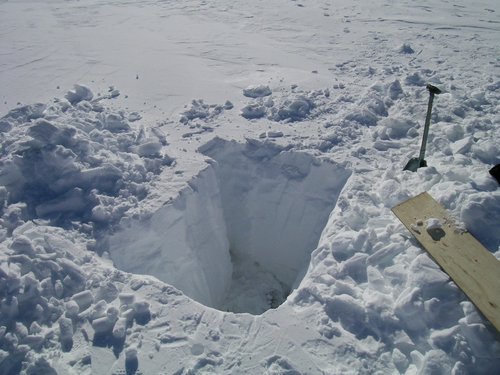New Improved surface mass balance on the Polar Portal
A new and improved surface mass balance data product has just been launched on the Polar Portal. This upgrade to the existing model not only improves the way the snow pack is handled in the model used to calculate surface mass balance, it also extends the data series back to 1980 – giving us a longer and more representative reference period.
As described earlier, DMI and GEUS researchers have recently published an article documenting and validating new advances in the model underlying the surface mass balance product shown on the Polar Portal. This provides a major improvement in the intricate details of meltwater percolation, refreezing, ice lensing and runoff.
Dr. Peter Langen, climate scientist at DMI, says “At the same time, we took the opportunity to extend our reference period back through the 1980s, so that we now can show differences with respect to the more common 1981-2010 period.” In addition to this, the mask describing which points are considered to be glacier ice has also been updated according to work by GEUS colleagues.
 |
Peter Langen continues, “On 25 April 2017, we have therefore updated the plots shown on Polar Portal to reflect these changes in the underlying model, reference period and ice mask. The update means that the new maps, values and curves will deviate from the previous ones which appear, for instance, in season reports.” Everything shown on Polar Portal is, however, calculated with this new setup, so that all curves and values are directly comparable.
Dr. Ruth Mottram, also a climate scientist at DMI, adds: “The changes mean that the reference curve is different from what it was before the update. The average annual total SMB is higher due to larger accumulation and lower summer melt in the longer reference period. In addition, the envelope covered by the years in the reference has widened. However, we can also see that the trends and signals in the data stay consistent across model versions.”
Individual years have changed to some extent. The season 2015-16, for instance, displays larger runoff with the updated setup than in the older version. The extraordinary accumulation seen in Greenland this winter is also still reflected in the updated version of the Polar Portal SMB product. “The new model still shows massive amounts of accumulation in the current season. And it is still well above the normal envelope since October, even when compared to the longer reference period” continues Ruth Mottram.
Data used to build the reference period is freely available for research purposes and some of it can be downloaded here.
Please contact info@portal.dk if you would like to use other data not yet available online or if you would like to use or publish results based on it.





